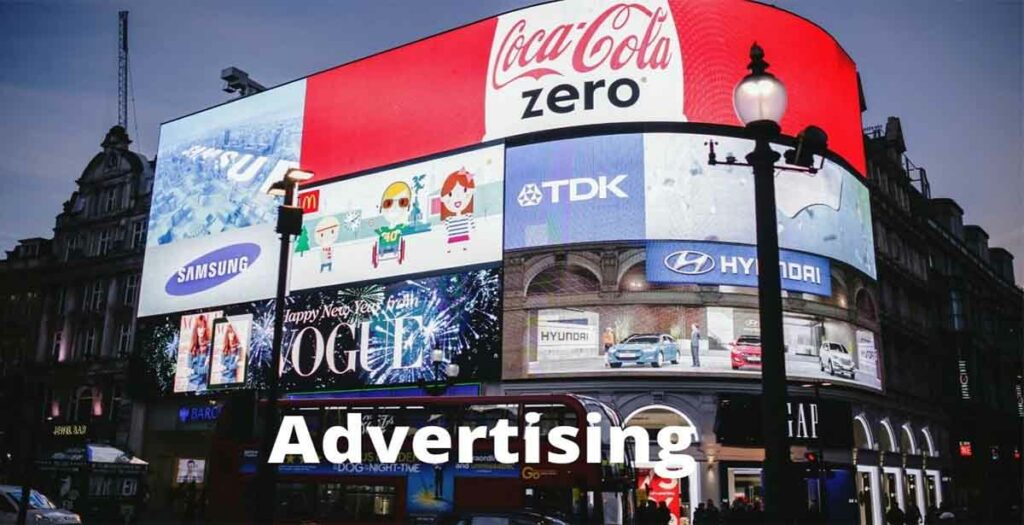


The Right Way To A Successful OOH Marketing Campaign!
March 11, 2024


9 Tourism Ads That Used Emotion, Humor, and Innovation to Win
March 14, 2024In today’s rapidly evolving marketing and advertising landscape, getting lost in the myriad of available strategies and techniques is easy. While innovative approaches have their place, sometimes, it’s the timeless characteristics of effective advertising that truly make a difference. A simple 30-second spot, a catchy jingle, a clever slogan – these are the basics that have consistently proven their worth.
Yet, advertising is much richer and more intricate than meets the eye. Did you know that an average individual encounters around 5000 advertising messages daily? That’s the power of advertising – and understanding its key characteristics can revolutionise your marketing game.
Effective advertising is a potent tool for businesses and corporations to boost sales, inform, persuade, and drive profits. It revolves around a blend of messages tailored for a specific target audience, aiming to create brand awareness, loyalty, and meaningful customer relationships.
What is an Advertisement?


Advertisements, commonly called “ads,” are publicly sponsored, non-personal promotional messages designed to elevate advertisement product, services, individuals, events, or ideas. The goal is to amplify visibility, generating interest, engagement, and sales.
To comprehend what constitutes an advertisement, we must first grasp the essence of advertising itself. At its core, advertising is an industry that captures public attention and directs it towards a particular advertisement product or service.
Advertisements, often abbreviated as ads or adverts, come in diverse formats, from written copies to interactive videos. They’ve evolved into a pivotal facet of the modern marketplace, extending their influence to various platforms, from traditional billboards to digital arenas like mobile apps and social media.
Broadly, the role of advertisement is a public communication tool promoting products, services, brands, or events. However, this definition can encompass a wider spectrum, extending to any paid communication crafted to inform or sway.
Understanding the Impact of Advertising on Consumers and Businesses


Undeniably, advertising wields a significant influence, a power that comes with substantial responsibility. In today’s advertising landscape, awareness of the industry’s potent sway over the masses is prevalent. While advertising is undeniably a boon to businesses, it also employs various tactics that may or may not yield positive societal impacts.
Research has revealed that modern advertising often fosters the concepts of increased spending, reduced savings, heightened borrowing, and amplified consumption. These trends can lead to the accumulation of debts and borrowed funds for purchasing goods or indulging in luxury services, whether essential or not.
Values also bear the imprint of advertising’s impact. Through narratives and tales set in contemporary times, advertising contributes to the ‘normalising culture.’ This duality underscores the importance of normalising the right ideals. Monetising deeply ingrained values of togetherness, familial bonds, and security, campaigns like ICICI’s life insurance commercials tap into emotional triggers, urging consumers to prioritise safeguarding their loved ones.
The 8 Characteristics of Advertising You Need to Know
The faster the internet evolves, the more media may be used for advertising. Commercial advertising media include YouTube, search engine banners, and email. Here are the top 8 advertising characteristics:
Pervasive
Advertising’s pervasive nature is akin to the air we breathe—it’s everywhere. From billboards towering over highways to the unobtrusive ads nestled between your social media feed, advertising seamlessly integrates into our daily routines.
Indian streets are adorned with vibrant billboards, promoting everything from local eateries to international brands. Even our favourite television shows and streaming platforms are punctuated with short commercials that leave a lasting imprint.


In the Indian landscape, we can’t help but notice the iconic “Amul Girl” adorning hoardings, commenting wittily on current events while promoting dairy delights.
Even the bustling streets of Mumbai, adorned with larger-than-life movie posters, showcase the omnipresence of advertising. This omnipresence ensures that brands remain etched in our minds, subtly nudging us towards their advertisement product or services.
Multidimensional and Complex
At its core, advertising is an intricate tapestry woven with creativity, psychology, and strategy. Behind every seemingly simple ad lies a web of market research, target audience analysis, and captivating storytelling.
Indian best advertisers have mastered the art of appealing to the diverse cultural nuances of the country, seamlessly merging traditional values with modern outlooks.


Take, for instance, Fevicol’s creative ad campaigns that showcase the incredible bond the adhesive creates, often with a humorous twist. These ads seamlessly blend entertainment with product promotion, leaving a lasting impact on viewers. The complexity lies in the creative process, selecting appropriate channels, and understanding consumer behaviour.
Advertising Reaches the Hearts
Paradoxically, while advertising aims to reach the masses, its success often hinges on creating a personal connection. Advertisers meticulously craft messages that resonate individually, whether by addressing pain points, aspirations, or emotions. In India, where cultural diversity reigns supreme, role of advertisement deftly navigates different languages, traditions, and lifestyles to evoke a sense of relatability.


Brands like Cadbury exemplify this with heartwarming ads that universally transcend language barriers to convey emotions. Whether it’s a child enjoying a chocolate bar or friends sharing a moment of joy, these ads tap into the universal emotions that bind us all.
Identified Sponsor allows transparency
Transparency is the cornerstone of effective advertising. Consumers seek authenticity and reliability, bolstered when an ad identifies its sponsor. Indian best advertisers understand the importance of building trust through transparency, as it’s a critical factor in an increasingly sceptical market.


Indian brands like Tanishq’s thought-provoking ads addressing societal norms are prime examples. These ads promote jewellery and challenge societal conventions, leaving a lasting impression on the audience. The identified sponsor adds credibility and accountability, ensuring consumers know the source of the message they are receiving.
Legal and Ethical Considerations in Advertising
Advertising is not just about creativity and persuasion; it also involves a web of legal and ethical considerations. Best Advertisers must navigate various regulations to ensure their campaigns don’t cross boundaries.
This includes refraining from making false claims, using deceptive imagery, or exploiting cultural sensitivities. In India, the Advertising Standards Council of India (ASCI) plays a pivotal role in regulating advertisements to maintain integrity and protect consumer interests.


The ASCI intervened when an Indian herbal product claimed to cure ailments beyond its ingredients’ scope. The ad was subsequently modified to reflect accurate information. Advertisers must adhere to guidelines prohibiting false claims, offensive content, and misleading visuals.
Harnessing the Power of Mass Media
Mass media is a crucial channel for reaching a wide audience, making it an integral part of advertising. Advertisers aim to engage potential consumers everywhere, from television to radio, newspapers, and digital platforms. In India, the diversity of languages and cultures requires advertisers to tailor their messages to resonate with different population segments.


During major Indian festivals like Diwali, numerous brands release heartwarming advertisements that celebrate the spirit of togetherness and giving, resonating deeply with the Indian audience. Indian advertisers have harnessed the potential of mass media effectively, creating iconic campaigns that have become an integral part of the cultural fabric.
Two-Way Communication with Impact
One of the defining characteristics of advertising is its two-way communication nature. Advertisers communicate messages to consumers with the expectation of immediate feedback. This makes crafting the right message and presentation crucial, as there’s no room for clarifications in real time. Brands must seize the limited window of attention to convey their product’s value proposition effectively.


The “Washing Powder Nirma” jingle is a prime example of how a simple, catchy tune can engrave a brand’s message into the minds of consumers without any need for interaction. Crafting compelling and memorable messages is crucial to capturing the audience’s attention and leaving a lasting impression. Indian advertisers have excelled by creating emotionally resonant campaigns that resonate with consumers.
Consistency Builds Recognition
Consistency is key to creating a strong brand identity through advertising. Brands that maintain a consistent tone, imagery, and message across their campaigns increase their chances of being recognised and remembered. This familiarity builds trust and loyalty among consumers.


A quintessential Indian example is the “Dhara: Jalebi” advertisement featuring a little boy who refuses to let go of his favourite snack. The recurring theme of innocence and joy in Dhara’s advertisements created a strong brand identity that still resonates in the minds of Indians.
Measurable: Evaluating Advertising Success
One of the standout features of an advertisement is its measurability. Indian brands, like the renowned e-commerce platform Flipkart, often use data analytics to gauge the success of their advertising campaigns.
With metrics such as click-through rates, conversion rates, and engagement levels, advertisers can determine which strategies are hitting the mark and which need refinement. This analytical approach helps brands tailor their campaigns to the preferences of their target audience, ensuring maximum impact.


When Amazon India introduced its Great Indian Festival campaign, it closely monitored the spike in website visits, sales, and app downloads during the campaign period. The measurable success of the campaign encouraged them to turn it into an annual event.
Bringing Trust Through Brief Introductions
In the Indian advertising landscape, brands understand the importance of building trust from the very beginning. Brands like Dettol and Lifebuoy, known for their hygiene and health-related products, craft ads that swiftly establish their products’ reliability. These brief introductions often feature real-life scenarios that resonate with consumers, making them more likely to connect with the brand emotionally and trust the advertised product.


Dettol’s iconic jingle, “Mummy mane, Dettol ka dhula”, is catchy and instantly connects with the audience’s concern for hygiene. This brief yet impactful introduction has become synonymous with cleanliness.
Importance of Advertising


Advertising plays a pivotal role in connecting businesses with their target audience. It’s not just about promoting a product; it’s about creating a memorable experience that resonates with consumers. Effective advertising has the potential to boost brand awareness, drive sales, and establish a strong brand identity. In the Indian context, advertising has been instrumental in showcasing the country’s diverse culture, traditions, and values.
Iconic campaigns like Amul’s witty and relatable advertisements have captivated Indian audiences for decades. Their iconic “Utterly Butterly Delicious” tagline, coupled with timely and relevant visuals, has established Amul as a brand that sells dairy products and reflects the nation’s pulse.
Future Trends in Advertising


In the era of information, personalisation has taken the forefront. Brands are leveraging consumer data to tailor ads to individual preferences. For instance, Amazon suggests products based on browsing history and purchasing behaviour. However, balancing personalisation and data privacy is essential to avoid intruding on consumer boundaries. Modern audiences crave engagement. Brands are now focusing on creating interactive and immersive ad experiences.
Indian smartphone manufacturer OnePlus used virtual reality to launch its products, allowing consumers to explore features of an advertisement in an engaging virtual environment. In today’s socially conscious world, consumers resonate with brands that stand for more than just profits. Indian companies like Tata have embraced sustainability and social responsibility in their advertising campaigns. By promoting eco-friendly practices and community initiatives, they appeal to the values of their audience.
Final Thoughts
The role of advertisement and effective advertising encompasses legal and ethical insights, mass media influence, compelling message creation, and consistency. These traits are important in India due to a diverse, fast-changing market. Embracing these factors and drawing lessons from iconic Indian campaigns enables marketers to craft attention-grabbing, memorable ads and influence consumers. Amid evolving advertising trends, these attributes persist as pivotal in steering triumphs.




